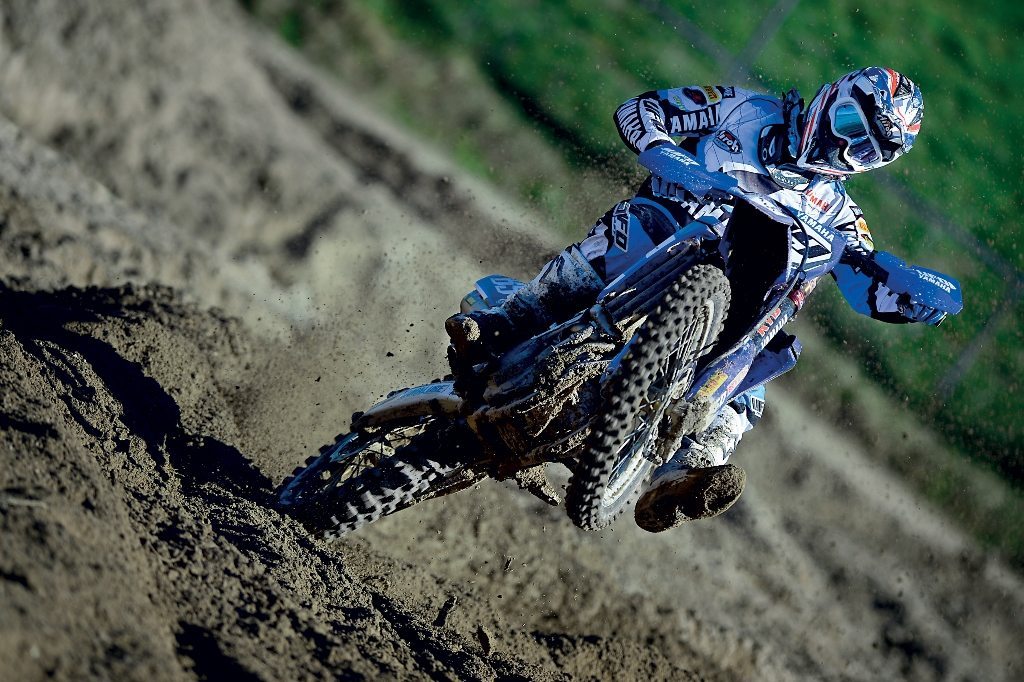The Yamaha Factory Racing MX-GP Team has unveiled their new livery for the 2014 season with a demonstration of their prowess at the Mantova Circuit in Italy. Jeremy Van Horebeek from Belgium will be going after the MXGP championship with the YZ450FM bike, while Frenchman Christophe Charlier will be chasing the MX2-GP title on the YZ250FM.
What is MXGP?
For 2014 the premier category of the 57 year old FIM Motocross World Championship has been renamed to ‘MXGP’ from MX1. Up until 2004 the sport used denominations based upon cylinder capacity, so 125, 250 and 500cc. In the middle of the last decade – and to reflect the wide presence of four-stroke engine technology – the championship was re-distributed into ‘MX1’ and ‘MX2’. The new MXGP class permits the entry of machinery from 250cc two-strokes to 450cc four-strokes. The 2014 calendar will involve the longest schedule in the history of the competition with eighteen rounds travelling from South America to the Middle East to Ukraine, Asia and the four corners of Europe.
By definition motocross is a closed circuit, off-road motorsport that takes place on a natural track consisting of man-made obstacles and jumps; the layout itself also makes use of the landscape for elevation changes, terrain and distinctive features.
A Grand Prix sees the riders of each class complete two 30 minute and 2 lap motos, with 25 points awarded to the winner and scaling down to one point for 20th place. The standings of both races are combined for an overall result. In the event of two riders tying on points then the second race ranking determines the order of the final classification. At the end of the season – that normally runs from March to September – the rider with the highest number of points is crowned as world champion.
More than other forms of motorcycle racing, motocross places higher emphasis on rider skill and fitness than solely outright machine performance. Of course, a well-tuned and fettled machine tailored to the rider’s style is essential for Grand Prix success but technique, conditioning and physical and mental strength is of prime importance.
The range and diversity of world championship circuits (not to mention varying weather conditions) mean that a rider has to be able to adapt to numerous race situations and circumstances; from the deep sand and loam tracks of northern Europe, to the hard-pack of the south and the supercross-style jumps and timing sections on some of the more modern courses.

Grand Prix motos traditionally take place on a Sunday with Saturday allocated for timed practice and qualification heats to determine who wins pole position. The classification from the Heat determines the entry order into the gate. Although the riders start the motos in one single line the best qualifiers from the 20 minute Saturday race get first pick of positions in the starting gate for Sunday, giving them an advantage in the often frantic and tight first corners.
Each entry list sees 30 riders competing for points. Most of the riders are permanently registered competitors with the local federation of each grand prix able to nominate a handful of the best domestic names to try their hand against the world’s best.
At the end of the season there is the traditional ‘Motocross of Nations’, (now reaching its 68th edition with the 2014 event due to be staged in Latvia), where the three fastest riders from each country compete under their flag. While this meeting is not part of the world championship it remains one of the most prestigious occasions on the calendar that is hugely popular with fans and riders alike, attracting crowds near the 80,000 mark.
From: www.yamaha-racing.com

